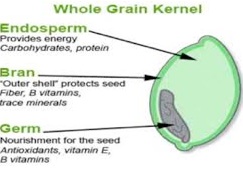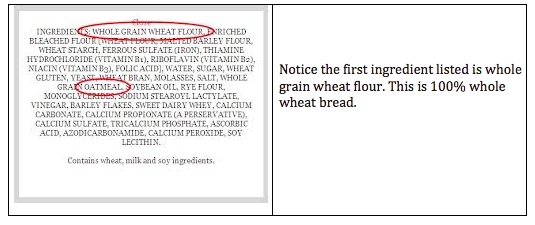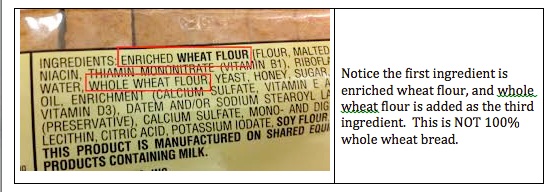
There are two big differences: how they are processed and how healthful they are. The flour for both is made from wheat berries, which have three nutrient-rich parts: the bran (the outer layers), the germ (the innermost area) and the endosperm (the starchy part in between).

Whole wheat is processed to include all three nutritious parts, but white flour uses only the endosperm. The fiber-dense bran and the nutrient-rich germ is processed out. When put head-to-head with whole wheat bread, white bread is a nutritional lightweight. Whole wheat is much higher in vitamins B6, E, magnesium, zinc, folic acid, chromium and essential fatty acids. Plus it is higher in fiber.
While fiber has long been known to aid digestive health, it can help you lose or maintain weight because eating fiber-dense wheat bread helps you feel full.
Since white bread is enriched, doesn’t that take care of the nutrients lost during refining?
No. When flour is refined, it loses the most nutritious parts of the grain…the fiber, essential fatty acids, and most of the vitamins and minerals. In fact, about 30 nutrients are removed, but by law only five must be added back ,though others often are iron, niacin, thiamin, riboflavin and folic acid.
How can I tell if bread is really whole wheat?
Color used to be a clue, but not anymore. Although white bread is white because it’s been bleached, some dark bread has just had caramel coloring added to it. Look for whole grain or whole wheat as the first ingredient on the ingredient listing on the food label. If any other ingredient is first (eg: enriched wheat flour), put the loaf back and keep looking.


